कोशिश गोल्ड - मुक्त
The World's Largest Canary - Sao Tome Grosbeak
African Birdlife
|July - August 2017
The São Tomé Grosbeak Neospiza concolor is a contender for being one of the most enigmatic bird species on the planet.

This Critically Endangered species is one of the rarest – or least observed – birds in the world, and its peculiar morphology resulted in it being placed in its own genus of uncertain affinities.
Based on the shape of its head and on its massive bill, the São Tomé Grosbeak was originally placed with the Thickbilled Weaver Amblyospiza albifrons. In 1903, other traits were used to place it in the true finches (Fringillidae), related to canaries and seedeaters (Serinus sensu lato). This is the current taxonomic view, but debate persisted throughout the 20th century about the true relationships of the species, with Ernest Moreau retaining the link to Amblyospiza in 1962. Genetic material was needed to confidently clarify the origins of Neospiza, but that is hard to come by for a bird that was not seen for close to a century. However, during his research on the origins of the endemic avifauna of the Gulf of Guinea, Martim Melo captured and bled four individuals between 2003 and 2011. These four samples provided sufficient material to infer the species’ evolutionary history.
In a recent paper published in Ibis (http://dx.doi.org/10.1111/ibi.12466), mitochondrial and nuclear sequences confidently identified Neospiza concolor as an Old World finch (Fringillidae: Carduelinae) within the Crithagra seedeater/ canary clade. This makes the São Tomé Grosbeak the world’s largest canary, 50 per cent heavier than the next largest species, the Thick-billed Seedeater Crith
यह कहानी African Birdlife के July - August 2017 संस्करण से ली गई है।
हजारों चुनिंदा प्रीमियम कहानियों और 10,000 से अधिक पत्रिकाओं और समाचार पत्रों तक पहुंचने के लिए मैगज़्टर गोल्ड की सदस्यता लें।
क्या आप पहले से ही ग्राहक हैं? साइन इन करें
African Birdlife से और कहानियाँ
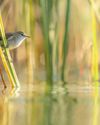
African Birdlife
stories begin at EYE LEVEL
ALTHOUGH I HAVE been taking photographs since 1998, it wasn't until 2019 that my hobby evolved into a serious pursuit. That's when I began to see photography not just as a means of capturing a moment, but as a form of art - something that can stir emotion, spark wonder and tell a deeper story.
1 mins
July/August 2025
African Birdlife
ALBERT the Wandering Albatross
Ahoy, shipmates, grab a pew and let me spin my yarn.
3 mins
July/August 2025
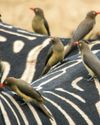
African Birdlife
I'll be back...
Southern African populations of oxpeckers were hit by triple hammer blows during the late 19th century and much of the 20th.
2 mins
July/August 2025

African Birdlife
BINDO and SABAP2
A match made in data science
2 mins
July/August 2025
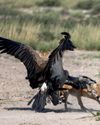
African Birdlife
PREDATORS of the pan
As regular visitors to Mabuasehube in the Botswanan sector of the Kgalagadi Transfrontier Park, we have often seen vulture feathers lying in the area of the waterhole at Mpayathutlwa Pan and have frequently observed a pair of black-backed jackals in the vicinity.
1 min
July/August 2025
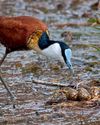
African Birdlife
Jacana & the egg thief
While on a photo expedition in the Richtersveld National Park with my brother Peter, we were watching one particular African Jacana on the Gariep River.
2 mins
July/August 2025
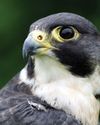
African Birdlife
A STRIPE FOR ANY OTHER PURPOSE?
Uncovering the adaptive complexities of falcons' malar stripes
2 mins
July/August 2025
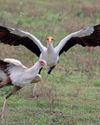
African Birdlife
grassland GLADIATORS
The Secretarybird is a highly soughtafter species for most birders on their first visit to Africa. It looks so strange, like a cross between a stork and an eagle. Even though it is widespread, occurring in almost any suitable habitat (grassland, open savanna and Karoo shrubland), it's generally uncommon.
1 mins
July/August 2025

African Birdlife
SECRETS SKY
Jessica Wilmot is the driving force behind BirdLife South Africa's Flyway and Migrants Project, working across borders to safeguard some of the planet's most threatened species and habitats. Supporting BirdLife International's East Atlantic Flyway Initiative, Jessica is at the heart of efforts to keep our skies alive with birds, particularly the enigmatic European Roller, which is her current focus and passion.
6 mins
July/August 2025
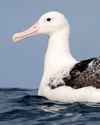
African Birdlife
Southern SIGHTINGS
Autumn is generally known to be quieter in terms of rarities across southern Africa, but the review period still had a few surprises for us, including a new species for the subregion. As always, none of the records included here have been adjudicated by any of the subregion's Rarities Committees.
3 mins
July/August 2025
Translate
Change font size
